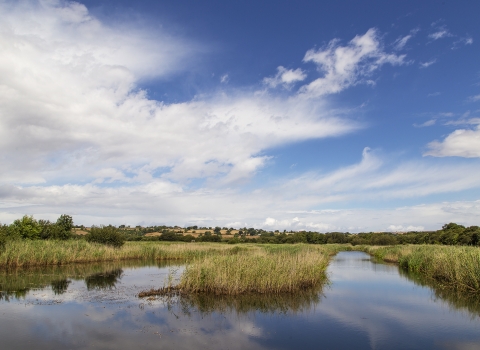Permit only
Know before you go
Dogs
Visit the 'Dog walking dogs on reserves' page in the Contact section for more information.
When to visit
Opening times
Open at all timesBest time to visit
Spring and summerAbout the reserve
In historic times the Somerset Levels and Moors consisted of a series of raised mires with intervening marsh and fen. Most of the region has now been drained and peat has been cut extensively on a commercial scale. The few remaining areas are isolated blocks of great scientific interest because of the variety of uncommon communities present and their rich flora and fauna.
They are also important sites for archaeological and botanical studies of peat stratigraphy. The reserve consists of carr woodland, wet and dry heath, with bog plants on the very wet peat. The reserve is one of the few areas of mire within the Avalon Marshes, which are of national importance. These are the habitats where many bog plants survive, these plants would have been found extensively in the area’s vast raised bogs which extended from the Isle of Wedmore to the Polden Hills in pre-historic times.
Street Heath has outstanding examples of the plant communities which were once common on the Somerset Levels. The vegetation consists of wet and dry heath, species-rich bog and carr woodland, with transitions between all these habitats. The heathland is dominated by Common Heather and Cross-leaved Heath and supports Heath Milkwort and Heath Spotted Orchid. Bog species present include Bog Asphodel, Marsh Pennywort, Frog-bit, White-beaked Sedge and the insectivorous plants Pale Butterwort and Lesser Bladderwort. The wet Carr woodland is dominated by Birch and Willow has established itself over much of the area, growing in the woodland is abundant Bog Myrtle. Rare ferns present include Marsh Fern and Royal Fern. Areas of open water have a wetland community which includes Bulrush, Yellow Flag, Cyperus Sedge and Lesser Bur-reed.
The great diversity of vegetation on the reserve is good for insect life and supports 33 species of butterflies, 200 moths and 12 grasshoppers and crickets. The Fen Raft Spider has also been recorded here and also Gloworms.
Birds that can be found in the carr woodland include the willow tit.
Reserve conservation management – Livestock grazing and scrub control to maintain the open mire vegetation.
History and archaeology - The reserve has a very interesting history. It is a former “turbary and estover plot for the poor of the parish” (turbary is the legal right to cut turf or peat for fuel on common ground or on another person’s ground, estover is the right to gather small firewood). For many years the ownership of the land was unknown and it was formally declared as Common Land in 1972 with Street Parish Council taking it under their jurisdiction. A year later it was declared a Local Nature Reserve and Somerset Wildlife Trust agreed to manage it on the parish council’s behalf. Just under ten years later it was declared a Site of Special Scientific Interest (SSSI).



